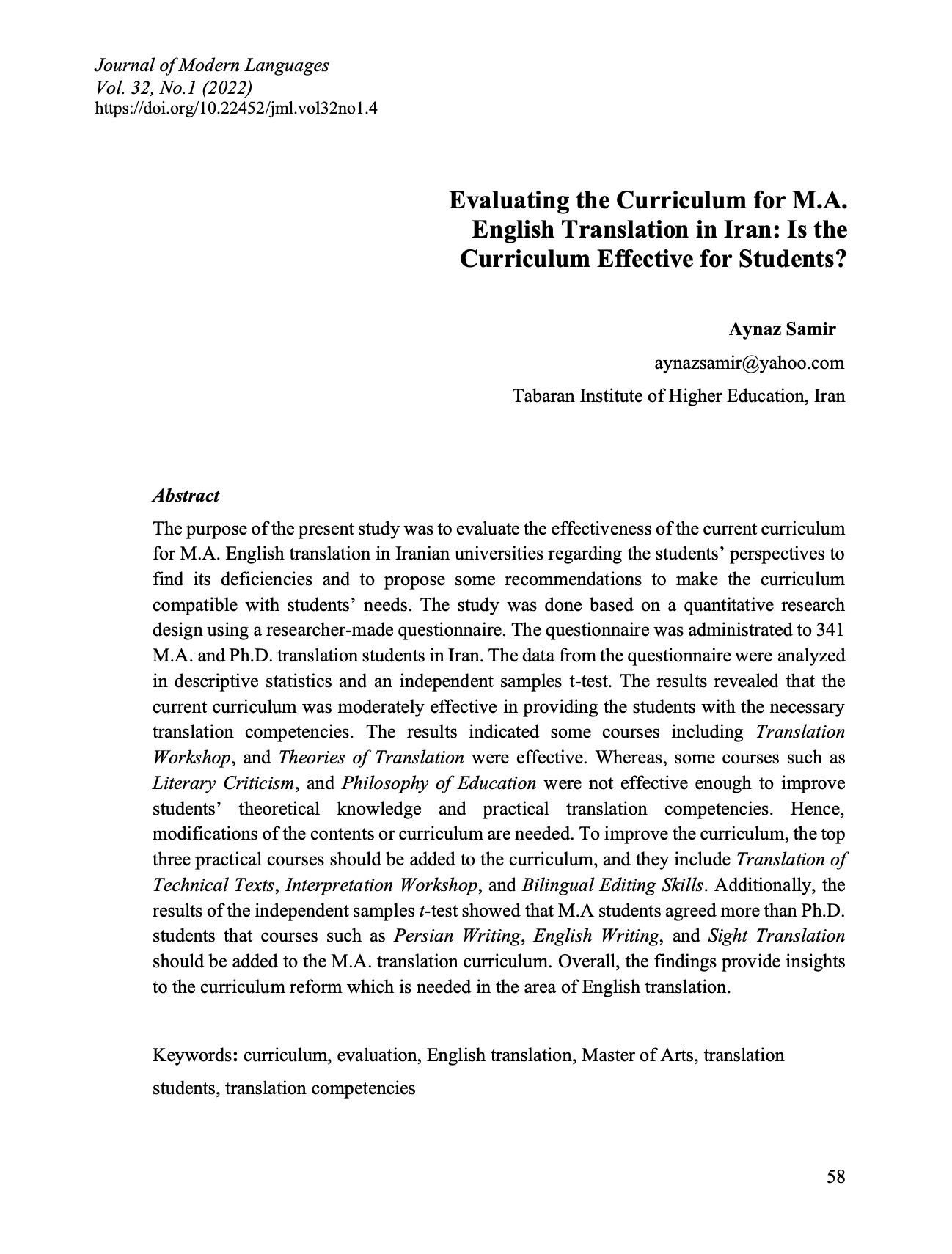Evaluating the Curriculum for M.A. English Translation in Iran: Is the Curriculum Effective for Students?
Main Article Content
Abstract
The purpose of the present study was to evaluate the effectiveness of the current curriculum for M.A. English translation in Iranian universities regarding the students’ perspectives to find its deficiencies and to propose some recommendations to make the curriculum compatible with students’ needs. The study was done based on a quantitative research design using a researcher-made questionnaire. The questionnaire was administrated to 341 M.A. and Ph.D. translation students in Iran. The data from the questionnaire were analyzed in descriptive statistics and an independent samples t-test. The results revealed that the current curriculum was moderately effective in providing the students with the necessary translation competencies. The results indicated some courses including Translation Workshop, and Theories of Translation were effective. Whereas, some courses such as Literary Criticism, and Philosophy of Education were not effective enough to improve students’ theoretical knowledge and practical translation competencies. Hence, modifications of the contents or curriculum are needed. To improve the curriculum, the top three practical courses should be added to the curriculum, and they include Translation of Technical Texts, Interpretation Workshop, and Bilingual Editing Skills. Additionally, the results of the independent samples t-test showed that M.A students agreed more than Ph.D. students that courses such as Persian Writing, English Writing, and Sight Translation should be added to the M.A. translation curriculum. Overall, the findings provide insights to the curriculum reform which is needed in the area of English translation.

